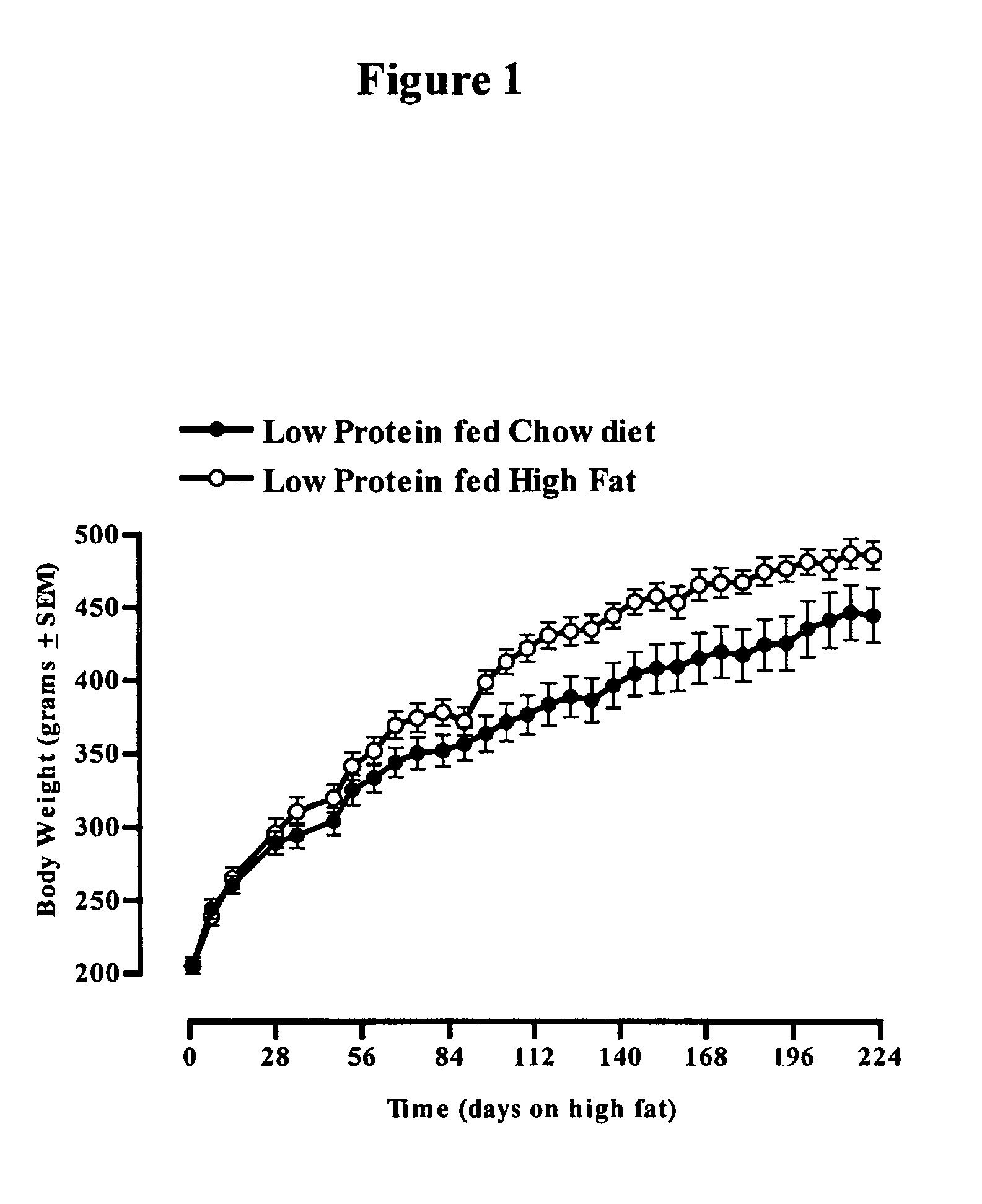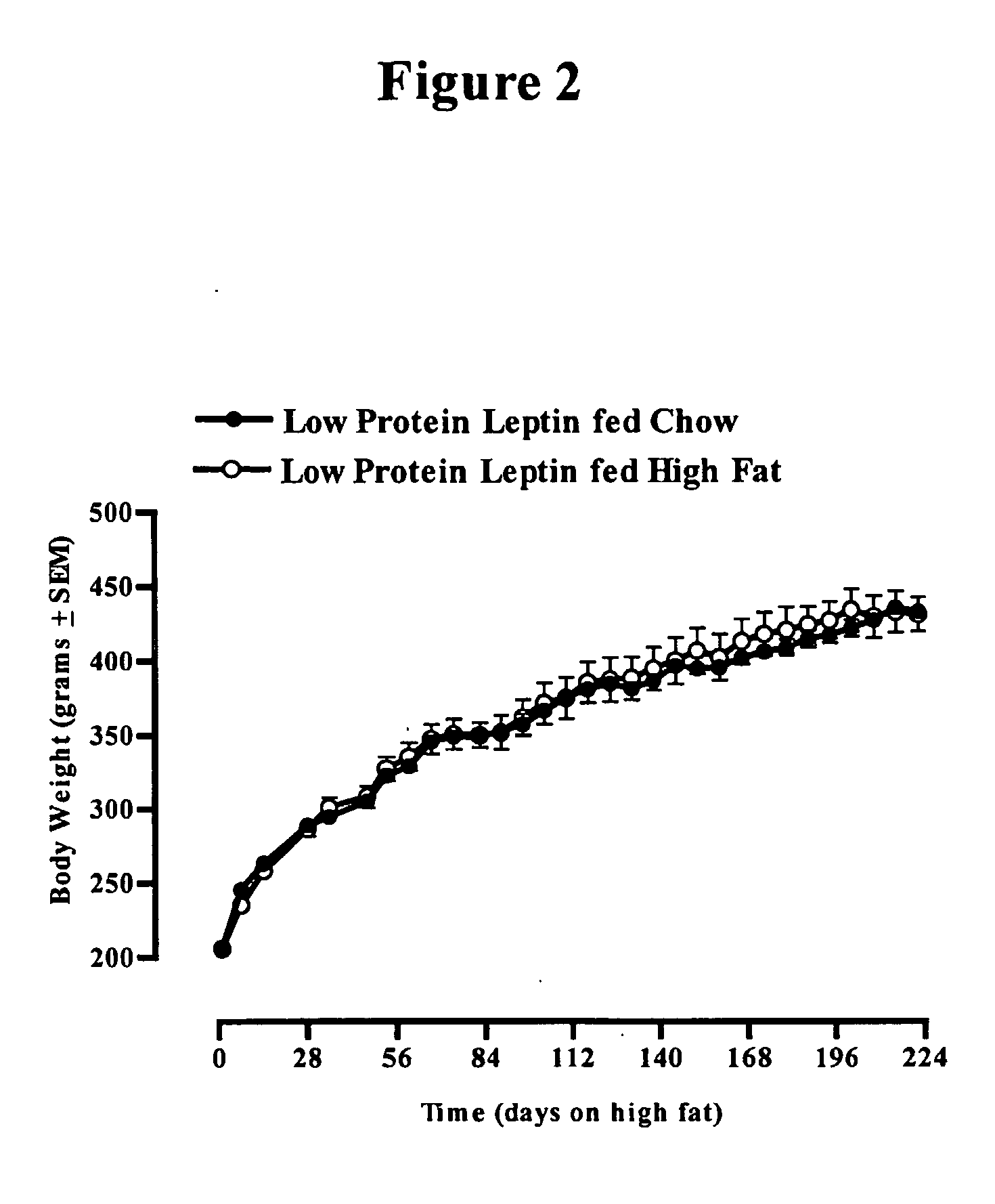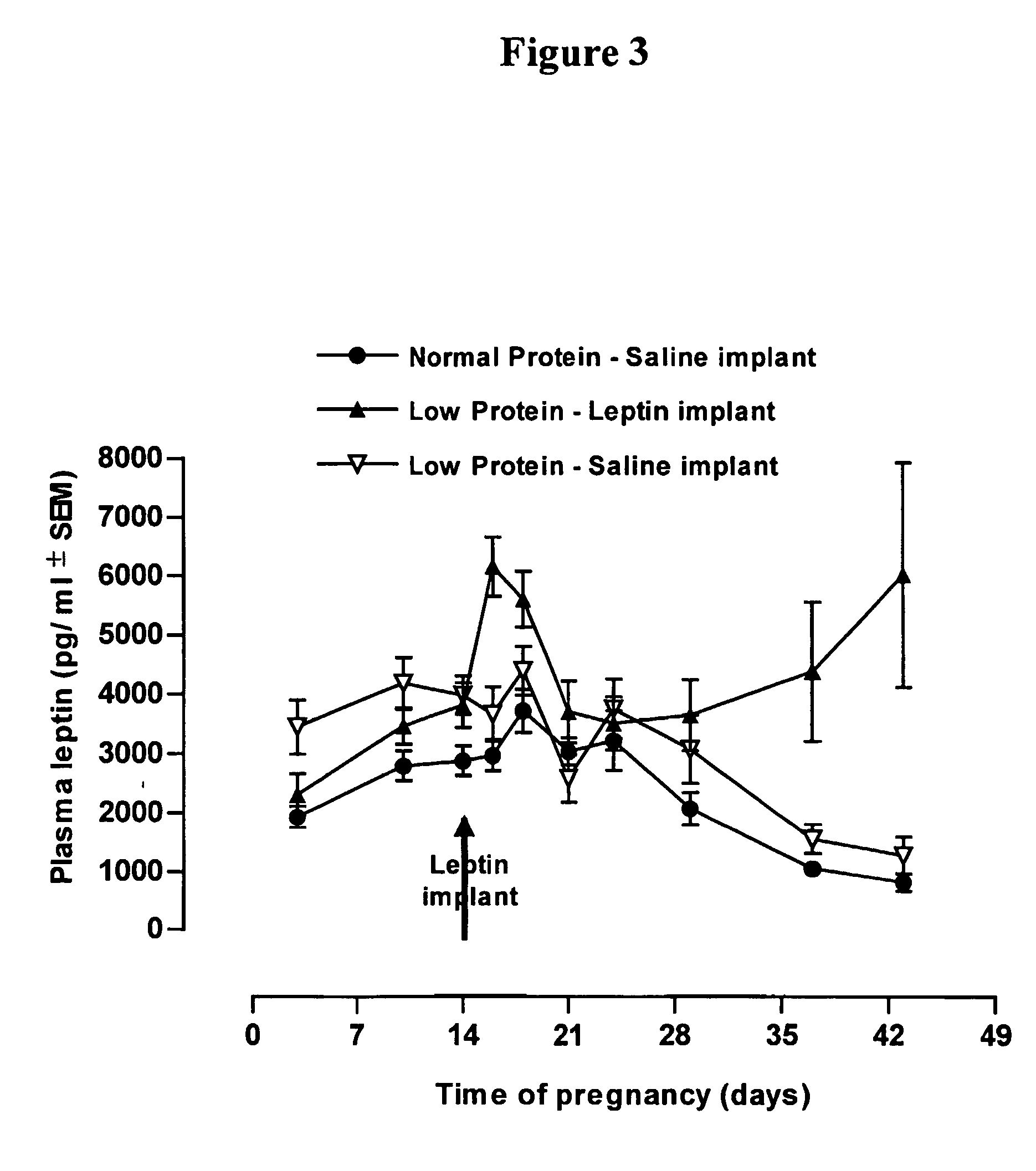Use of leptin for infant with low birth weight for prevention of obesity
a technology of leptin and infants, which is applied in the field of infants with low birth weight for preventing obesity, can solve the problems of affecting the development of obesity, the inability to meet the needs of children, so as to increase the resistance of the offspring to the deleterious effects
- Summary
- Abstract
- Description
- Claims
- Application Information
AI Technical Summary
Benefits of technology
Problems solved by technology
Method used
Image
Examples
example 2
[0128] Pregnant Wistar rats were fed on either a normal (20% protein) diet or an isocaloric diet containing 8% protein throughout pregnancy and lactation. From day 14 of pregnancy they received saline or leptin (2 mg / kg / day) via a subcutaneous minipump (Alzet Corp.) for 28 days. All pups were weaned at 21 days old onto a 20% protein diet and at 6 weeks of age some of the pups were transferred to a high fat diet (60% of calories provided by fat).
[0129] A glucose tolerance test was performed at 6 months of age. In addition measurements were made of glucose and insulin throughout the study and during the glucose tolerance test to assess insulin sensitivity.
[0130] Plasma leptin concentrations in the mothers given leptin were increased 5-fold (FIG. 3) relative to the concentration in mothers not given leptin, but had only a minor effect on maternal food intake and body weight. The litter size was the same in all three groups. Placental weights were lower in low protein diet mothers (FI...
PUM
| Property | Measurement | Unit |
|---|---|---|
| initial weight | aaaaa | aaaaa |
| birth weight | aaaaa | aaaaa |
| weight | aaaaa | aaaaa |
Abstract
Description
Claims
Application Information
 Login to View More
Login to View More - R&D
- Intellectual Property
- Life Sciences
- Materials
- Tech Scout
- Unparalleled Data Quality
- Higher Quality Content
- 60% Fewer Hallucinations
Browse by: Latest US Patents, China's latest patents, Technical Efficacy Thesaurus, Application Domain, Technology Topic, Popular Technical Reports.
© 2025 PatSnap. All rights reserved.Legal|Privacy policy|Modern Slavery Act Transparency Statement|Sitemap|About US| Contact US: help@patsnap.com



